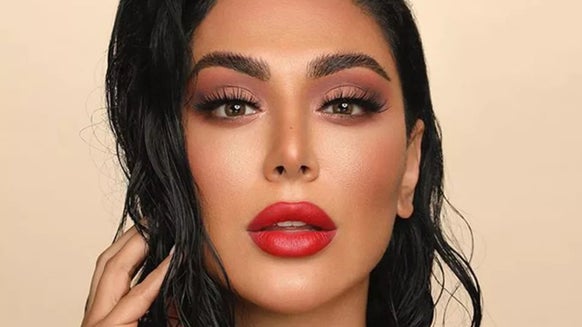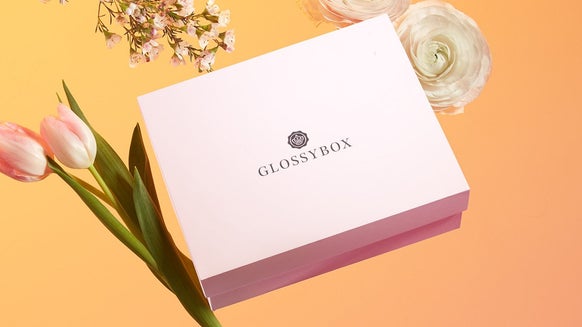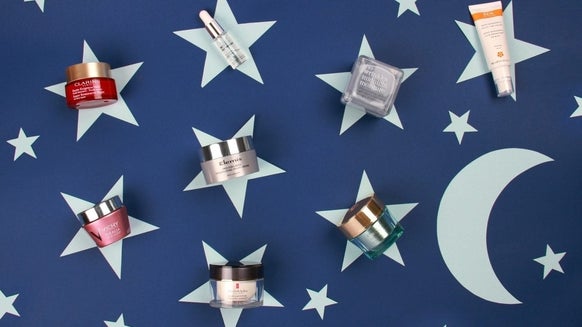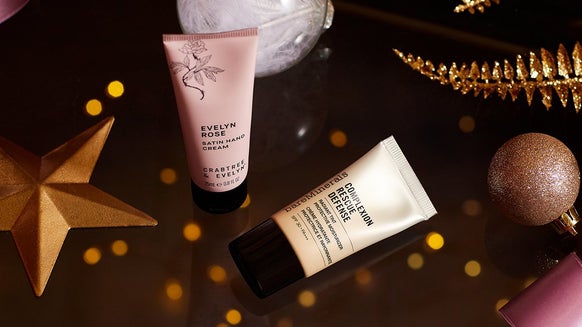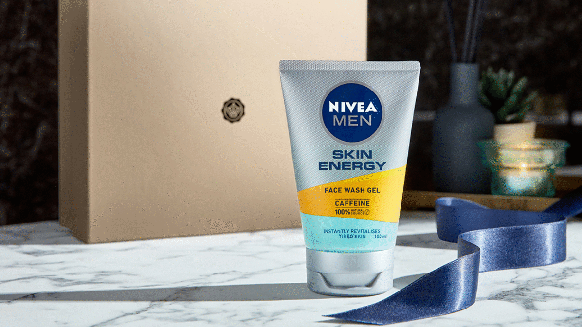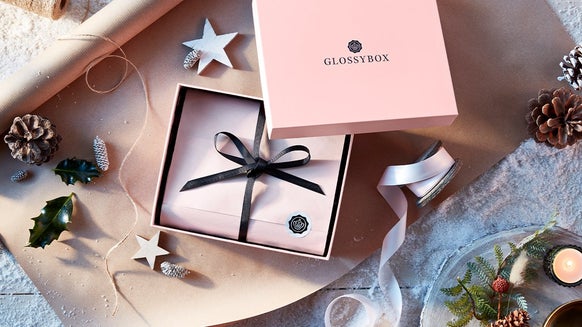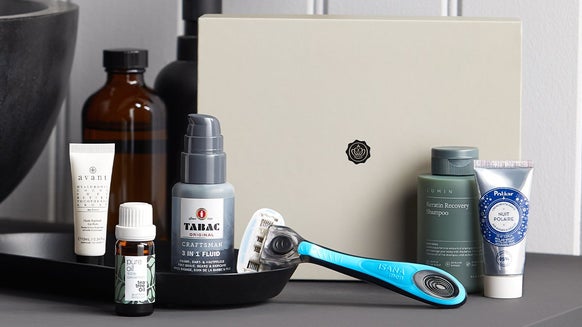#nofilter: How Your Menstrual Cycle Affects Your Skin
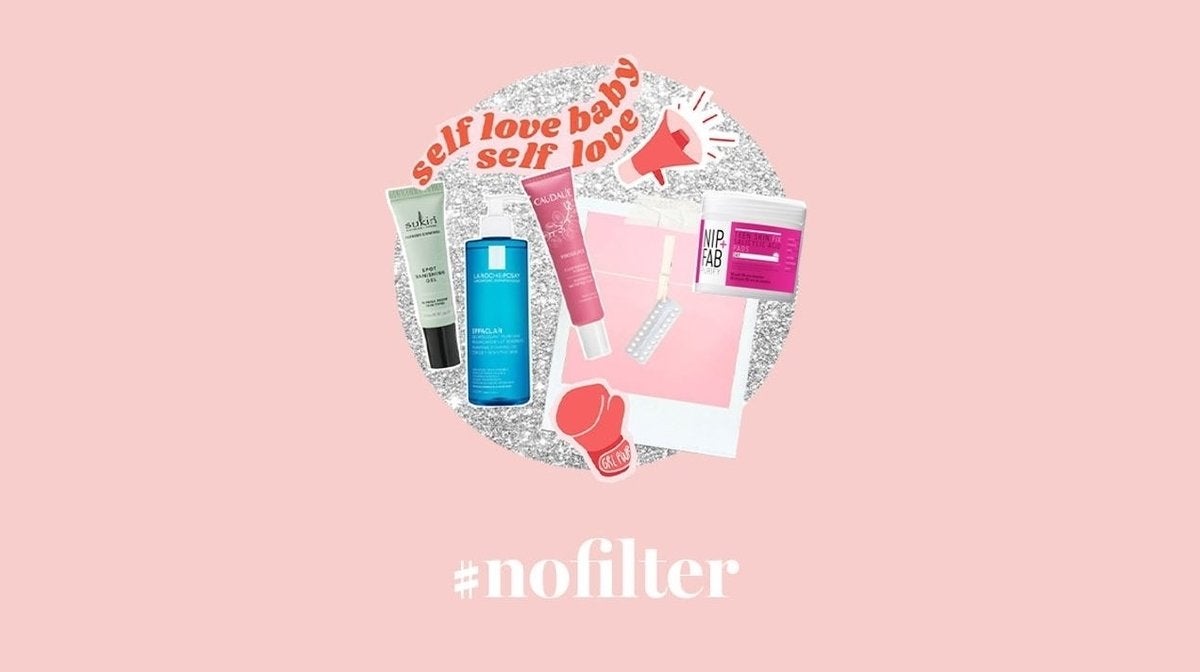
Over the past couple of months, we’ve been fighting the stigma around menstruation by talking about periods with #nofilter. We’ve discussed period poverty, period shame and all of the menstrual products available out there. Now though, it’s time to address period skin and the impact that your hormonal cycle has on your complexion…
Have you ever noticed that a few angry spots flare up every month like clockwork about a week or two before your period starts? Congratulations, you’re suffering from hormonal acne, aka ‘period skin’! Don’t worry though. To save you (and all menstruators) from period skin, here’s everything you need to know about it and all the steps you can take to prevent it.
What Causes Period Skin?
As you no doubt know, our cycle affects our hormonal levels, with oestrogen, progesterone and testosterone levels fluctuating during the four phases of our cycles. Whilst not everyone’s cycle is 28 days, the below will give you an idea of what happens during each phase and the effects hormones have on your complexion.
The Menstrual Phase (Day 1-5)
This phase starts on the first day of your period when your levels of oestrogen and progesterone are at their lowest. During this phase, your body temperature is lower and your blood circulation is slower, which can cause your skin to look duller and feel dehydrated. Deeply moisturising and brightening skincare products are best during this phase.
The Follicular Phase (Day 5-13)
This phase starts when your period finishes, and ends when ovulation begins. During this phase, your skin should look its best as levels of oestrogen and testosterone (both of which contribute to healthy skin) increase. Your skin will naturally feel more moisturised and contain more collagen, making it stronger and more elastic. Your complexion won’t need any extra attention during this phase, so just follow your usual skincare routine.
Ovulation (Day 14)
This is when your levels of oestrogen suddenly drop, triggering the fourth phase of your cycle. Your skin should still look healthy and vibrant though.
The Luteal Phase (Day 15-28)
This phase starts after ovulation and continues until you have your period. Also known as the PMS phase, this is when you’ll notice the biggest changes to your skin. Both progesterone and oestrogen levels increase. This sudden hormonal surge sends your oil glands into overdrive, resulting in an oilier and more acne-prone complexion. Hello, period skin! During this phase, consider using salicylic acid to get rid of excess oil, as well as anti-inflammatory products to calm and soothe skin.
How Should I Treat My Skin According To My Period?
Now that you know what happens during your period, here’s how you can counteract those hormonal fluctuations.
During Your Period
As I just mentioned, this is when your skin is most prone to dryness and will probably lack vibrancy. Of course, it doesn’t have to look and feel that way…
Counteract Dullness
If your skin is no drier than usual but needs a big boost of radiance, I’d recommend PIXI’s Vitamin-C Lotion. This lightweight moisturiser boasts a fast-absorbing formula infused with (you guessed it) vitamin C. It increases the collagen levels in your skin and lightens the appearance of dark spots. Expect a hydrated, bright and renewed complexion, even during this low hormonal phase of your cycle.
Counteract Dryness and Dullness
If your skin is particularly dry and dull, then I’d recommend using Origins’ GinZing™ Ultra Hydrating Energy-Boosting Moisturiser. Not only does it have an ultra-hydrating formula that nourishes even the driest skin, but it is infused with coffee bean and panax ginseng which energise and add radiance to your skin.
Keep Your Skin Hydrated On-The-Go
If you find that your skin becomes dry throughout the day, consider using a refreshing mist. The Lumene Nordic C Valo Glow Refresh Hydrating Mist is a great choice. Blending Arctic spring water, vitamin C and Nordic cloudberry extract, it provides instant hydration, giving skin its moisturised, healthy glow back.
During Your Follicular Stage And Ovulation
Great news! You don’t actually need to take any particular precautions during this phase. Your skin should look its best, so stick with the normal recommended routine for your skin type.
During Your Luteal Phase
This is where the troubled skin starts. It will most likely be at its worst from day 21 through 28, so it’s wise to take a few precautions the week before.
Counteract Increased Oiliness
As I mentioned above, this phase is characterised by a sudden surge in hormones which can send your oil glands into overdrive. To rebalance your complexion, a non-drying cleanser that meets the needs of oily skin (but is suitable for all skin types) is best.
The La Roche-Posay Effaclar Cleansing Gel would work great. Gentle yet effective, it washes away oil, dirt and impurities without stripping away any moisture. Expect a refreshed, shine-free complexion that is clean, clear and visibly healthy.
Prevent Spots Before They Happen
In the second week of your luteal phase, those raging hormonal spots make their appearance. So, to help prevent them, you should use salicylic acid-infused skincare in the first week of that phase (think day 15-21). My recommendation? NIP+FAB’s Teen Skin Fix Salicylic Acid Day Pads.
Infused with antioxidants and antimicrobial Wasabi agent, it helps to remove the bacteria that causes acne and control excess oil. A blend of salicylic acid and lotus flower extracts decongests your pores and calms inflammation. Use it up to four times a week to clear and calm your hormonal skin.
Treat Spots
If any spots do appear, don’t worry, I’ve got a solution for that too: Sukin’s Blemish Control Spot Banishing Gel. Infused with tea tree and salicylic acid, this gel improves the appearance of blemishes and soothes your skin in just half an hour. You just apply it straight onto the spot.
Control Shine
If you naturally have oily skin, your complexion can look particularly shiny during your luteal phase. So, to control that shine, I’d suggest using a mattifying moisturiser, like Caudalie Vinosource Moisturizing Matifying Fluid.
This oil-free formula hydrates and rebalances your skin to give it a velvety, matte finish. Flaxseed powder helps to mattify your complexion, while organic grape water soothes it – perfect for oily and acne skin.
Adapting your skincare as above will really help to counteract the impact that your menstrual cycle has on your skin, trust me!
Are There Specialist Period Skincare Brands?
While beauty companies have historically shied away from topics like period skin (so we’ve had to do our own research and find suitable products as above), we’ve seen the emergence of cycle-based skincare over the last few years…
Amaretta, for example, is an American skincare brand that develops skincare products ‘for every phase of your cycle’. You just answer three quick questions on their website and they suggest the best products for you. Knours similarly studied the relationship between menstrual cycles and the changes that your skin goes through to offer solutions that actually take hormone changes into account. Faace is a new skincare brand that has just launched their Period faace face mask. Designed to re-balance your skin and prevent breakouts, it keeps skin clean and clear throughout your menstrual cycle.
All of these brands are helping to revolutionise the look and feel of your skin throughout your menstrual cycle.
While getting rid of a few pimples might seem minor compared to larger period-related concerns like period poverty and period shame, you’ll be happy to know that some of these brands are helping to tackle these issues too. Faace, for example, have partnered with
#nofilter
This year, I want to openly talk about issues that face every woman every day. Throughout January and February, I’ve been addressing all things menstruation to make periods a normal topic of conversation with #nofiltersonperiods. Next month, we’ll be talking all things body image and body confidence. Stay tuned!

